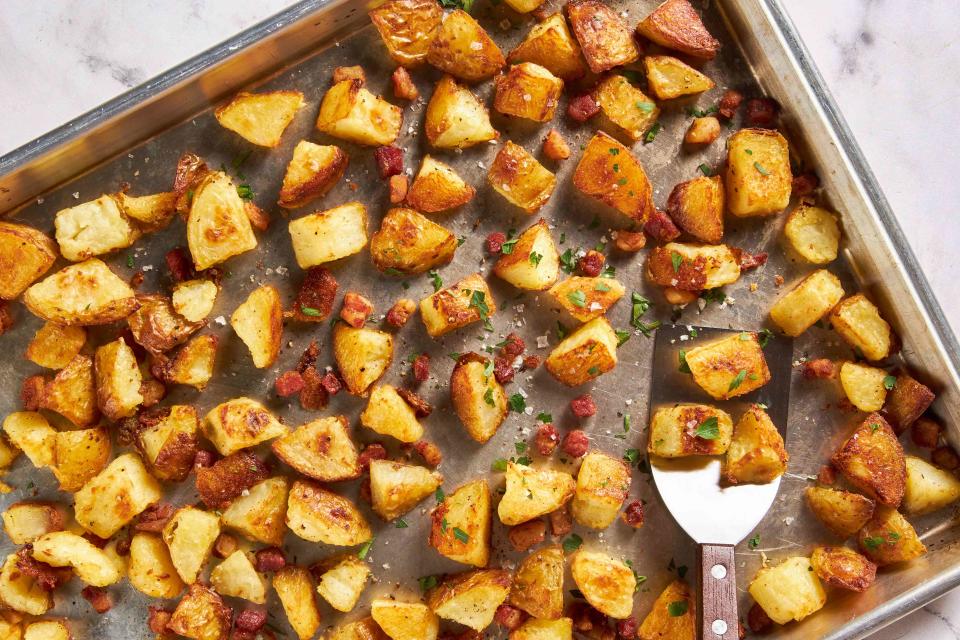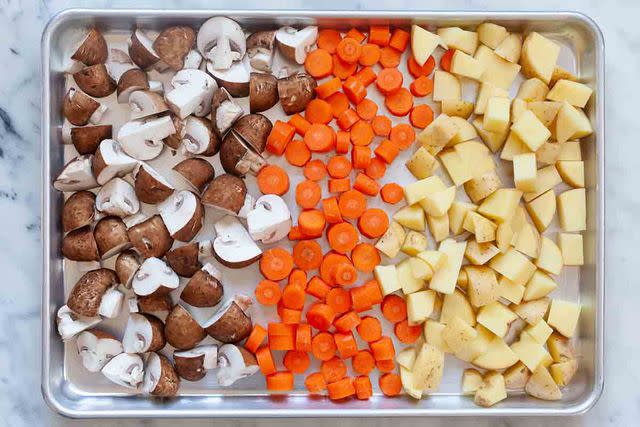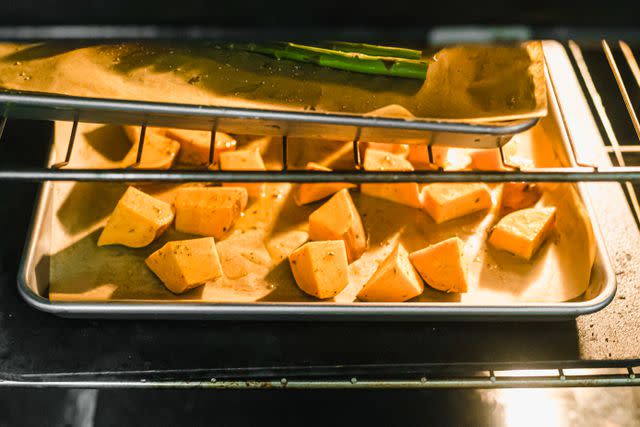7 Tips for Better Roasted Vegetables, According to a Recipe Developer
Ever had roasted vegetables that taste meh? Never again!

Simply Recipes / Ciara Kehoe
Roasting vegetables is easy, right? Chop, oil, and season them. Throw them in the oven, toss them around a few times, and get crispy, tender bites ready to accompany any meal from baked chicken to cheesy casserole. They're almost impossible to mess up, but even as an experienced recipe developer, I have.
From the oven temperature and the size of the baking sheet to how big or small you cut the vegetables, there are so many factors that determine how they turn out. I've gathered here seven simple tips to follow for the best roasted vegetables every time. Don't worry, it's still super easy!

Simply Recipes / Sally Vargas
1. The Only Oven Temperature You Should Use
The goal of roasting vegetables is for the outside to get caramelized and crispy before the inside turns soft and mushy. The ideal temperature to achieve this goal is 425°F. Any lower, you won't get any browning, and any higher, they'll burn before cooking through.
Read More: This Is the Only Temperature You Should Roast Your Vegetables At
2. Use the Right Sized Baking Sheet
Your vegetables need room to roast. If they touch or are stacked on top of each other, they'll steam and get rubbery or worse, mushy. How do you know if your vegetables have enough space? If you’re unable to spread them in an even layer without them touching, it’s time to grab a larger baking sheet.
I always aluminum baking sheets because they heat up quickly and are easy to clean. Skip the non-stick baking sheets which don’t hold up well, especially when frequently exposed to high temperatures.
3. Preheat the Baking Sheet
Just like you preheat a pan or skillet when cooking on the stovetop, you should preheat your baking sheet when roasting vegetables. Place it in the oven while it’s heating up and you prep your veggies. Doing this jump-starts the cooking and helps the vegetables brown more quickly and evenly.
4. Make the Vegetables the Same Size
The best way to prepare vegetables for roasting is to cut them uniformly in size. That way they will cook evenly and at about the same rate. For most vegetables, consider cutting them into bite-sized pieces, about an inch. Smaller cuts will cook faster and larger cuts will take longer to cook through.
The density of the vegetable matters too. Denser foods like root vegetables—carrots, beets, and parsnips—will take longer to cook, so cut them into smaller pieces.

Simply Recipes / Karishma Pradhan
5. Roast on the Middle Rack
Move the oven rack to the middle—it's the best place for roasting vegetables. It should be your primary spot for when you roast most anything. If you have more than one baking sheet, position racks in the middle and upper positions, then rotate them halfway through roasting.
6. Toss and Turn
To ensure your vegetables brown evenly, you’ll need to flip them during cooking. Use an oven mitt and a long-handled utensil, such as a silicone spatula or wooden spoon to help with this task. A good practice is to give everything a stir once halfway through. Set a timer to help you remember.
7. Cooking Time
How long it takes to roast your vegetables depends on how big you cut them and how dense they are. For smaller cuts and softer foods like broccoli and mushrooms, start checking at the 10-minute mark. If they’re not done, check again every five minutes until crisp-tender. For larger and denser items like beets and parsnips, start checking at the 30-minute mark. If they need more time, put them back in the oven and check back in five-minute increments. The more you roast, the more familiar you’ll become with how long it takes.
Read the original article on Simply Recipes.


